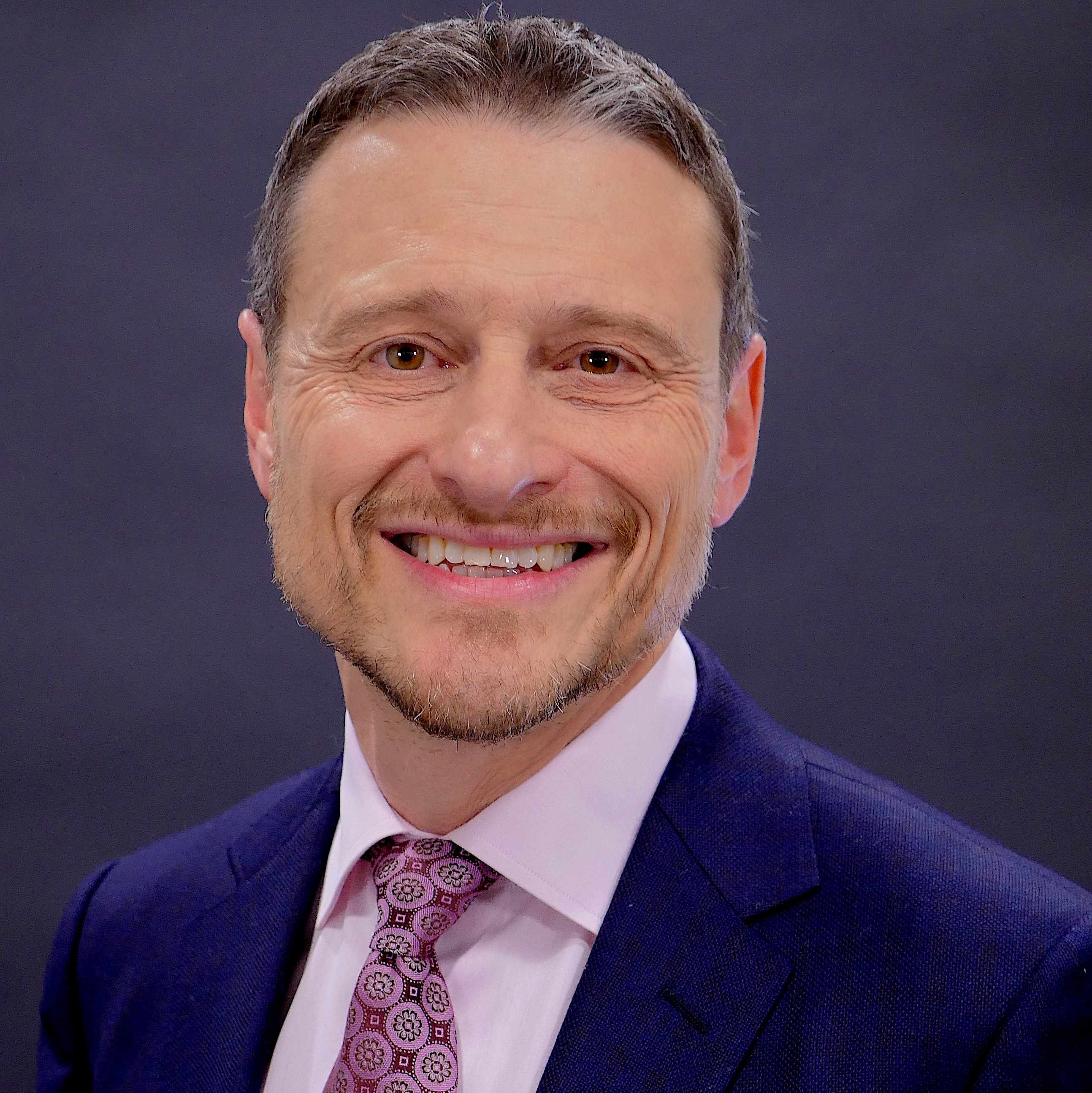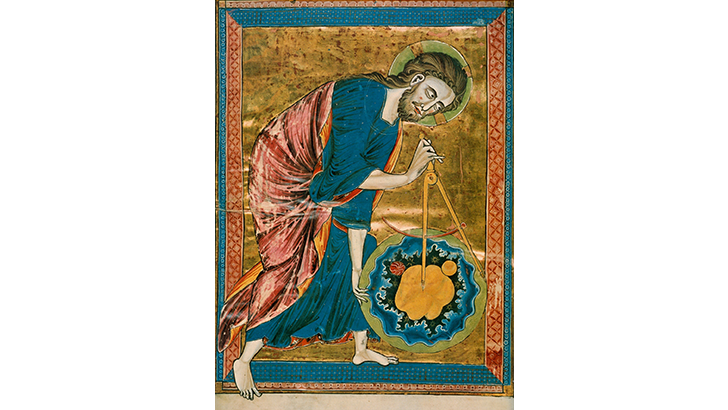Science and Theological Education: Reports from the Field
Although not trained as a “theologian,” for years I’ve written and taught about theology. I’ve done this primarily as a student of Islamic history and societies, and I have committed to communicating to my own students some of the intricate subtleties and deep wisdom of the medieval kalām tradition (dialectical or “scholastic” theology)—the intellectual stock-and-trade of such famous practitioners as al-Ghazali, Maimonides, and Aquinas.
One of the topics in teaching about medieval kalām that had me in a seemingly endless search for just the right explanatory metaphor centered on what the earliest Muslim theologians referred to as the doctrine of al-qaḍāʾ wa l-qadar or “the decree and the power” of God. This doctrine is basically an analogue for what the Christian tradition typically refers to as the doctrine of “predestination.” The challenge was how to explain the “logic” of what appears to be fundamentally “illogical”—namely, the paradoxical claim that, on one level, the destiny of every human being is set by the radical and inescapable force of divine determination, while, on another level, human beings are meaningfully responsible for the moral choices they make.
One Mother’s Day Eve in the mid-nineties, my seven-year-old and the gift he wanted to buy for my wife inspired a rare pedagogical epiphany. I was able to convert a relatable experience of enormously disparate agency in the execution of a single task into a metaphor that I have happily used ever since to help explain what became the dominant doctrine in Sunni kalām regarding the coherence of human moral responsibility and the divine power of radical determination over all occurrences.
Needless to say, for the past twenty years or so, I have been quite pleased with my cherished metaphor—not to mention my own cleverness in having devised it. I have also been so subconsciously convinced by the misleading cliché that science and theology are essentially “separate but equal” realms of explanatory discourse, that I never imagined that one day I might be able to use modern neuroscience to help convey the insights of medieval kalām. And yet that is what has happened.
A little more than a year ago, I read Robert Sapolsky’s masterful Behave: Human Biology at Our Best and Our Worst (Penguin, 2017) and encountered, among other things, the soulful determinism of an accomplished Stanford neuroendocrinologist. In a move that would likely surprise, and perhaps even offend this brilliant and staunchly areligious philanthrope, I began to perceive some of the profound structural affinities between what otherwise might appear to be two radically incommensurate ways of interpreting human experience. One is the fairly recent understanding of the human brain as a beautiful and complex organic machine, the function of which is radically conditioned by its own ontogenic and phylogenic history. The other is at least a millennium-old Sunni Muslim understanding of the human person (nafs) as a creature whose agency and ultimate destiny is radically conditioned by the will of their creator.
There was just one problem. As incredibly rich as his work in Behave is, Sapolsky’s insights were not sufficient to account for the distinctly holistic viewpoint of Sunni kalām. On the one hand, I was deeply impressed by Sapolsky’s brilliantly provocative and theologically suggestive critique of the legal applications of the Christian doctrine of “mitigated free will.” Of particular note in this regard is Sapolsky’s indictment of the pernicious ways in which this scientifically suspect doctrine has been manipulated to become the basis for so much of the cruelty of a secular system of “justice” that is largely and irrationally retributive when the science increasingly indicates it ought to be far more restorative. On the other hand, however, I was disappointed by the degree to which Sapolsky’s radical determinism appeared to leave almost no room for considering the concepts of moral choice and responsibility as anything more than illusory epiphenomena of the activity of our wondrously complex, but ultimately mechanistic brains.
Enter Michael Gazzaniga and his enormously intriguing Who’s in Charge: Free Will and the Science of the Brain (Ecco, 2012). I was led to Gazzaniga by a reference in Behave where Sapolsky juxtaposes his genuine respect for Gazzaniga as “one of the leading lights and elders” of neuroscience with a strikingly glib dismissal of the latter’s attempt to argue, from a scientific perspective, that moral choice is more than just an illusion (Sapolsky, 591). So I decided to read Gazzaniga for myself and concluded that his thesis is far more than the exercise in mental gymnastics and/or intellectual legerdemain Sapolsky would have us think.
At the core of Gazzaniga’s thesis is his turn to recent developments in emergence theory (primarily from the field of theoretical physics and quantum mechanics) in order to argue that the reason neuroscientists, like Sapolsky, cannot account for “free will” is because of the limiting horizons of most current neuroscientific research. According to Gazzaniga, the vast majority of neuroscience focuses almost exclusively on how individual human brains function along a contextual spectrum ranging from the biology of the discrete organism of which the brain is a part, to the broader environment in which the organism exists and with which it interacts. Instead, Gazzaniga calls for expanding the horizon of neuroscientific research to allow for an emergence-based understanding of how human brains interact with one another. He argues that were neuroscience to begin to account for the dynamics of both “bottom-up” and “top-down” causality within an emergence-based framework of multiple brains in relationship with one another, the notion of moral choice would begin to look less like an epiphenomenal illusion and more like a verifiable property of brain function. Suffice to say that Gazzaniga’s more expansive neuroscientific paradigm offers a terribly evocative scientific analogue for the holistic paradox of both determination and moral responsibility embraced by the practitioners of medieval Sunni Muslim kalām.
My recent foray into the terra incognita (for me) of neuroscience—and eventually evolutionary biology—is what originally stirred my interest in developing the “Neuroscience, Evolution, and Theology” course I plan to offer for the first time in the late Spring of 2020 at my home institution, Catholic Theological Union (CTU) in Chicago. At about the same time I began developing this course, I learned that two of my CTU colleagues were in the process of submitting a proposal for participation in Phase II of the Science for Seminaries (www.ScienceforSeminaries.org) initiative funded by the John Templeton Foundation, sponsored and facilitated by the Dialogue on Science, Ethics, and Religion (DoSER) project of the American Association for the Advancement of Science (AAAS), and cosponsored by the Association of Theological Schools (ATS). As I learned more about the initiative—discussed below in programmatic detail in the essay by Curtis Baxter—I proposed to my colleagues on the Theological Education Committee of AAR that we consider dedicating the Committee’s Special Topics Forum at the 2018 Annual Meeting in Denver to a panel focused on “reports from the field” whereby the sponsors and a select sample of lead faculty participants could share what they learned from Phase I of Science for Seminaries. They liked the idea and agreed that it would be a way of stimulating an important conversation about the challenges and opportunities involved in this and, by implication, other possible efforts to integrate leading-edge science into leading-edge graduate theological curricula.
It is my privilege to present, in this edition of Spotlight, five reports from the field—five insightful essays that together embody the rich and multifaceted nature of the conversation that took place last November at AAR.
The first two are by Curtis Baxter of AAAS/DoSER and Deborah Gin of ATS. What both of these essays have in common is the relative altitude of their perspectives. Both Curtis and Deborah give us a bird’s-eye view of the initiative from the perspective of the two national sponsoring organizations. Curtis provides a concise summary of the vision behind the Science for Seminaries initiative, an informative overview of its national scope, and an invitation to readers who may be interested in participating. Deborah’s piece is an ideal complement. Among other things, Deborah deftly summarizes and synthesizes the data ATS collected from graduating student questionnaires, revealing not only key aspects of the initiative’s impact on students, but also raising vitally important questions of pedagogical ethics.
These two essays are followed by perspectives from three faculty, each of whom helped lead a Science for Seminaries initiative at their home institutions and each of whom teaches at one of three distinct types of graduate schools of theology and ministry.
In his essay, Paul Metzger offers a nuanced portrait of the sensitivities, challenges, and measurable successes of the initiative at Multnomah Biblical Seminary, an Evangelical Protestant school in Portland, Oregon. In many ways, Paul’s contribution is a story of the resilience of a leading Evangelical institution as it both authentically and critically embraces the importance of an initiative sponsored by AAAS—an organization which eagerly participated in drawing the battle lines of a national culture war between the scientific and Evangelical communities when, in the summer of 1925, it played a leading role in resourcing the defense in the legendary Scopes Trial.1
With Fred Ware’s piece, we move from the context of an Evangelical seminary connected to a west coast university founded in the 1930s, to an east coast Mainline school that, tracing its origins back to advocacy on behalf of the captive West Africans of the schooner Amistad, is part of a historically black university founded in the immediate aftermath of the Civil War. In his thoughtful retrospective on Science for Seminaries at Howard University School of Divinity, Fred integrates elements of his own personal journey as a theological educator with keen observations about ministerial competency, the structures of academic institutions, and the problematic lack of reciprocity, balance, and mutuality in what often amounts to unidirectional rather than bidirectional conversations between scientists and theologians.
The final essay in this edition of Spotlight is a set of clear-eyed, astute, and hopeful reflections by M. T. Davila who helped lead a Science for Seminaries initiative at Andover Newton Theological Seminary. In addition to a helpful discussion of some of the particulars of how she went about integrating science into her own teaching of Christian ethics, M.T. recounts some of the more neuralgic moments in the implementation of the initiative and, in so doing, is able to articulate invaluable lessons about the dynamics of epistemology and power that lie at the heart of so many of the tensions in the science-theology dialogue.
I hope you enjoy and benefit from reading these excellent contributions to the broader conversation about contemporary theological education as much as I undoubtedly have.
1 Edward J. Larson, Summer for the Gods: The Scope’s Trial and America’s Continuing Debate over Science and Religion (New York: Basic Books, 1997), 114ff.
 Scott C. Alexander, PhD is professor of Islamic studies and Christian-Muslim relations, founding director of the Catholic-Muslim Studies Program, and chair of the Department of Intercultural Studies and Ministry at Catholic Theological Union in Chicago. He currently serves as chair of AAR’s Theological Education Committee.
Scott C. Alexander, PhD is professor of Islamic studies and Christian-Muslim relations, founding director of the Catholic-Muslim Studies Program, and chair of the Department of Intercultural Studies and Ministry at Catholic Theological Union in Chicago. He currently serves as chair of AAR’s Theological Education Committee.

